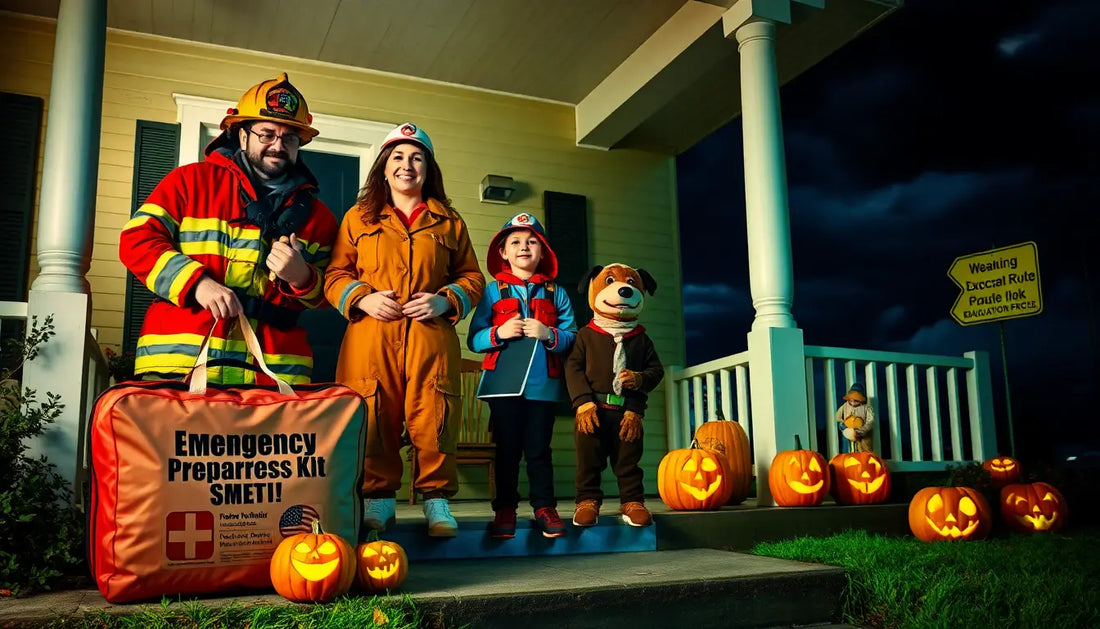
Trick-or-Treat with Caution: Natural Disaster Readiness for Families
TF AdventureIt's that spooky time of year again - Halloween is just around the corner! As families prepare for the excitement of costumes, candy, and trick-or-treating, it's important to also consider another crucial element: natural disaster readiness.
At TF Adventure, we understand that while the thrill of Halloween is undeniable, it's crucial to ensure your family's safety in the face of potential natural disasters. Whether you're braving the elements for a night of door-to-door adventures or hunkering down at home, being prepared can make all the difference.
The Haunting Reality of Natural Disasters
From earthquakes to floods, hurricanes to wildfires, natural disasters can strike at any time, often with little warning. And let's not forget about the more unexpected threats, like avalanches or even tsunamis. The truth is, no matter where you live, your family could be at risk.
In recent years, we've seen a surge in the frequency and intensity of these events, with climate change playing a significant role. Experts predict that the situation will only worsen in the years to come. That's why it's essential to take proactive steps to ensure your family's safety, even during the most festive of occasions.
Building Your Natural Disaster Readiness Kit
The foundation of any effective natural disaster preparedness plan is a well-stocked emergency kit. At TF Adventure, we've put together a comprehensive guide to help you assemble the perfect kit for your family.
Essential Items
- Water: At least one gallon per person per day, for at least three days
- Non-perishable food: Canned goods, dried fruits, nuts, and energy bars
- First aid kit: Bandages, antiseptic, medications, and other medical supplies
- Flashlights and batteries
- Battery-powered or hand-crank radio
- Extra cash and coins
- Copies of important documents (ID, insurance, etc.)
- Warm clothing and sturdy shoes
- Blankets and sleeping bags
- Tools: Wrench, pliers, screwdriver, etc.
- Sanitation and hygiene items: Toilet paper, soap, feminine products
- Pet supplies (if applicable)
Don't Forget the Extras
- Multi-tool or Swiss Army knife
- Duct tape and plastic sheeting
- Whistle to signal for help
- Maps of the local area
- Matches and lighter
- Glow sticks
- Portable phone charger
- Emergency blanket
- Hand warmers
Remember, the key is to have a well-rounded kit that can sustain your family for at least 72 hours, the critical period after a natural disaster strikes. Regularly check and update your kit to ensure everything is in working order.
Preparing Your Family
Having an emergency kit is just the first step. It's also crucial to have a plan in place and ensure that everyone in your family knows what to do in the event of a natural disaster.
Discuss and Practice
- Sit down with your family and discuss the types of natural disasters that could occur in your area.
- Identify the best escape routes and meeting spots in case you need to evacuate.
- Practice your emergency plan regularly, so everyone knows their roles and responsibilities.
Stay Informed
- Sign up for local emergency alerts and weather notifications.
- Follow trusted sources for the latest updates on natural disasters in your region.
- Keep a battery-powered or hand-crank radio on hand to stay informed even if the power goes out.
Protect Your Home
- Secure your home by trimming trees, clearing gutters, and reinforcing windows and doors.
- Consider investing in a backup generator or solar-powered chargers to keep essential electronics running.
- Identify the location of your home's main utility shutoffs and learn how to turn them off in an emergency.
Trick-or-Treating with Caution
Now that you've got your emergency preparedness plan in place, it's time to enjoy the spooky festivities! But don't forget to keep safety top of mind.
Costume Considerations
- Choose costumes that are comfortable and allow for easy movement.
- Avoid masks that obstruct vision or make it difficult to breathe.
- Opt for bright, reflective materials to increase visibility.
Trick-or-Treating Tips
- Stick to well-lit, familiar neighborhoods.
- Carry a flashlight or glow stick to stay visible.
- Travel in groups and keep a close eye on young children.
- Inspect all treats before consuming them.
Staying Alert
- Monitor weather conditions and be prepared to adjust your plans if a natural disaster is looming.
- Keep your emergency kit and plan close at hand, just in case.
- Stay connected with your family and community, and be ready to lend a helping hand if needed.
Remember, the key to a safe and enjoyable Halloween is being prepared. By taking the time to plan ahead and equip your family with the necessary tools and knowledge, you can ensure that your trick-or-treating adventures are filled with more treats than tricks.
So, don your costumes, grab your bags, and head out into the night - but always keep one eye on the horizon, ready to face any natural disaster that may come your way. Happy Halloween, and stay safe!
